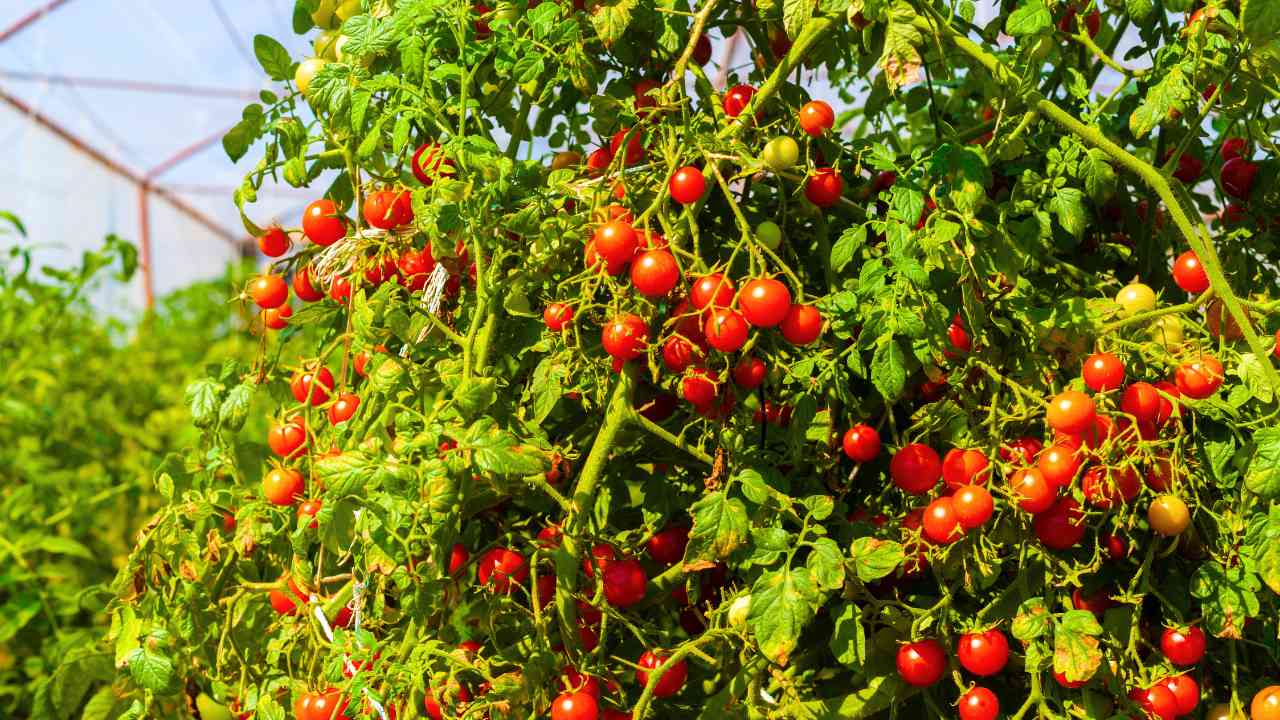I live in zone 5b in New Hampshire and look forward to the last frost date every spring so I can safely move plants into the ground. Tomato season starts a long time before the seeds do, though. You’ll get a lot out of starting seeds indoors, and you’ll see the results for a long time.
I don’t like leaving plants in the greenhouse longer than planned in the spring when it’s really wet or cold, but I know they’ll benefit from the extra warmth and safety. In the long run, plants that aren’t stressed out do better.
Also, I bet you love tomatoes and want more of them if you’re reading this!
I wish I knew a magic trick that would make tomato plants grow very quickly, but there isn’t one.
You can be sure of rapid growth, high yields, and tasty fruits if you make certain you grow the right tomatoes in the right way and give them everything they need.
There are several things you can do to keep your plants healthy and happy, which will help them produce more tomatoes and last longer.
Here are nine things you can do to help your tomato plants grow faster.
Pick Out the Right Types

Choose tomato types carefully based on what you want and what you need.
Pick types that will grow well in your area, on your soil, and in the way you have your garden set up.
Make your goals and standards attainable. If you like to make sauces and freeze them for the winter, choose tomatoes that are good for that. On the other hand, if you like your tomatoes fresh in salads, stick to cherry and cocktail kinds.
It’s easy to get excited about new colors and tomato types and buy too many. But stick to what you love and will use. When you look through seed catalogs, pay attention to and write down the following:
- Performer sign for cool or warm weather
- Temperature of the soil needed
- Time to germinate Days to grow up
- Resistance to disease
What plants do when the weather starts to cool down in the fall
Favorites that grow up quickly include “Early Girl,” “Sungold,” “4th of July,” and “Defiant PhR.”
There are hybrids on the market today that are made to grow in short seasons, small areas, and cool weather. Don’t let the colors and marbling take your attention away!
Plant Seeds Inside

Care for seedlings properly to create the best conditions for their growth.
It’s very important for seedlings to do well in their first few weeks of life. To begin their trip, tomatoes need the right amount of heat, water, sunlight, and food.
This makes sure that the roots grow properly, leaves grow properly, and flowers grow properly. These important processes slow down in seedlings that have a rough start to life. This will affect them for the rest of their lives.
When starting seeds indoors, you should use a heat mat that you can change. Tomato seeds grow best between 68° and 85° (20°C and 29°C). To save room, use a strip tray. Plant 15 to 20 seeds in a row, cover them lightly with the medium of your choice, and press it down. Then, water the seeds from below to keep them in place. Do not let the ground get completely dry.
Once the seeds start to sprout, move the tray to a warm spot or put it under grow lights. This will keep the plants from getting too tall. Place the light two to three inches above the tray. Change the light as the plants get bigger. After they have a few sets of true leaves, move them to bigger pots. As needed, keep stepping them up.
You should properly harden off your seedlings before moving them to outdoor soil. You can do this by slowly exposing them to direct sunlight, rain, and cooler temps. This helps them get used to the “real world” so they don’t go through donor shock. This makes us prepared for everything that’s to come.
Do Not Push It
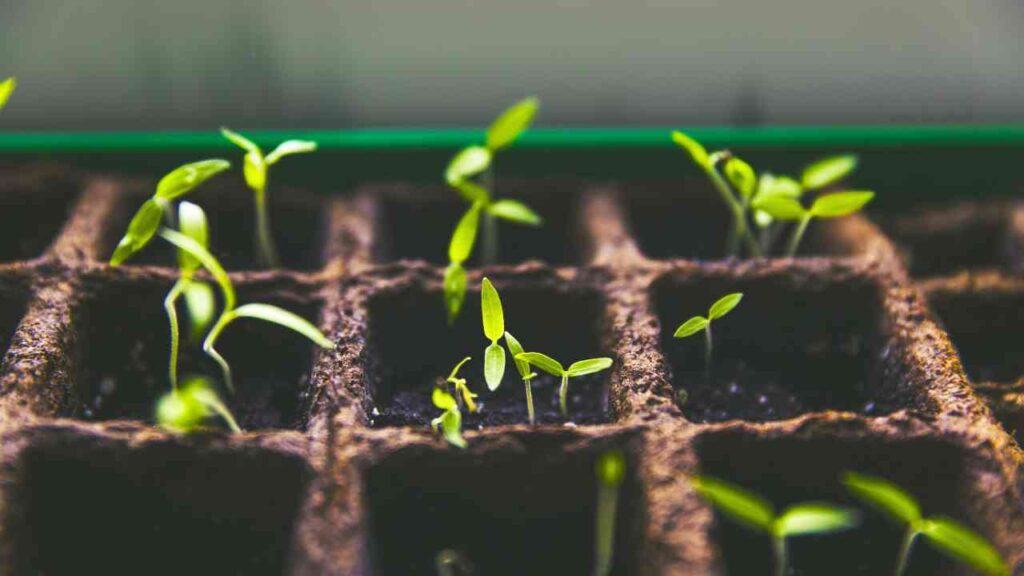
Make sure the seedlings are healthy by giving them the right care and settings.
It is best to leave seedlings indoors, in a partially heated area outside, or in a protected growth area if you don’t have a high tunnel. To keep seedlings happy, healthy, and low on stress, give them big containers, water, well-balanced soil, and lots of sunshine.
If your plants stay too long for a few days or a week, they’ll get over it much faster than if they are squished into soil that shocks their systems and gets cold overnight. At this point, plants will not grow, but they can still do so in a pot in your garden or basement.
Tip: Some gardeners put black plastic mulch that can be used again and again between rows of tomatoes. The sun’s heat will be drawn to the black, which will help warm up the ground. On top of that, it will help tiny weed seeds sprout, but they will die in the dark under the plastic.
You should wait to mulch your plants with plastic mulch until the soil is fully warm. Use the strong spring sun to help your garden grow. When summer comes, use mulch to help the land keep its moisture and reduce the number of weeds that grow in it.
Action, Lights, and Soil

Planting tomatoes in the right places in the yard will help them grow the most.
Putting tomatoes in the right place in your yard could mean the difference between plants that do well and plants that barely make it. Things that make you happy:
Make changes to the dirt if you need to. Plants need the right amount of phosphorus to grow healthy roots. This makes it easier for plants to take in water and nutrients, which makes them healthy and productive.
Make sure the pH is right. The right pH level for tomatoes is between 6.0 and 6.8. This lets them take in the nutrients they need.
Put them somewhere that gets full sun for at least eight hours a day.
If your tomatoes haven’t done well in the past, you might want to move them, check the dirt, and change how often you water them. Get back to the basics.
Watch Out For Your Babies!
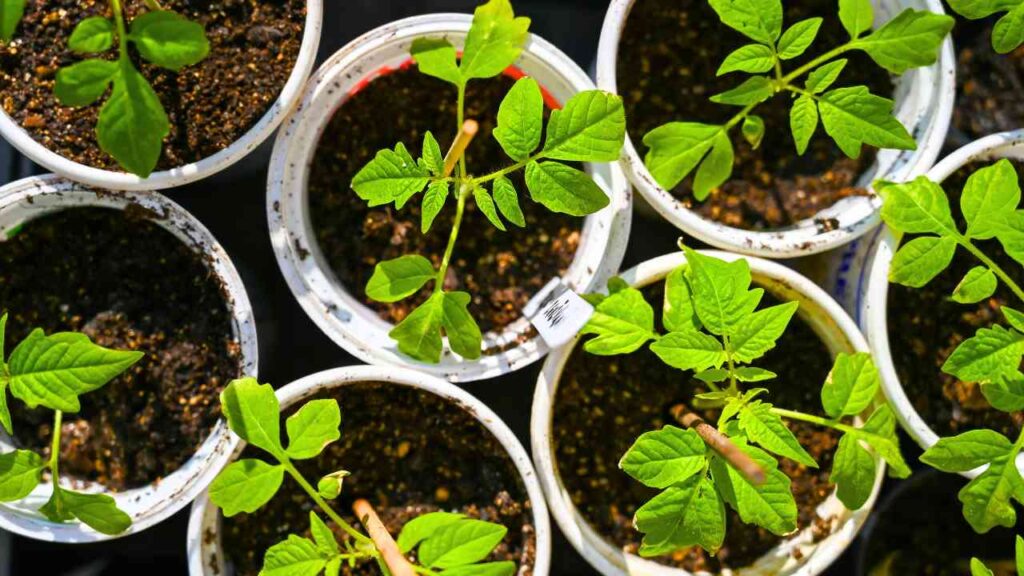
Protect tender tomato plants from adverse weather so they can grow well.
Tomatoes and other tropical plants require protection from harsh weather, wind, and strong sunlight when they are young.
Things that stress plants put them in a state where they can only survive and they won’t grow. Seedlings’ stems can break or sustain damage, leaving them vulnerable to illness or death.
Frost can also do a lot of damage or kill young plants. This is especially important in the north, where it stays cool in the spring through April and May. Check the weather report often and keep them inside a little longer to get through the worst of it.
Sunscald, which leaves tomatoes with sunken areas, weak spots, or black mold, can happen in places where the summer sun is direct and hard. Sunscald makes plants more likely to get other diseases. If you need to, cover them with a shade cloth.
Give Enough Support

A strong trellis device will help tomato plants grow up.
Set up a strong trellis system and tie it up every week. Cherry tomatoes, in particular, can get very tall and will need to be staked to keep producing until fall.
A tomato cage, mesh nets, or strong trellis fencing can be used for types that grow close together, stay put, or are shorter.
For types that will grow between five and seven feet (or more), the Florida weave is a fantastic choice. For example, you could pound t-posts into the ground every few plants, weave tomato wire between every other plant, and then double back to make sure they’re fully supported.
Drop-down string and clip methods work well if you grow plants inside where the ceilings are high. For very tall types, you could use the lower-and-lean method or a wicket system. In this way, the plants can keep growing up without getting too high for picking.
Cut Back and Sucker
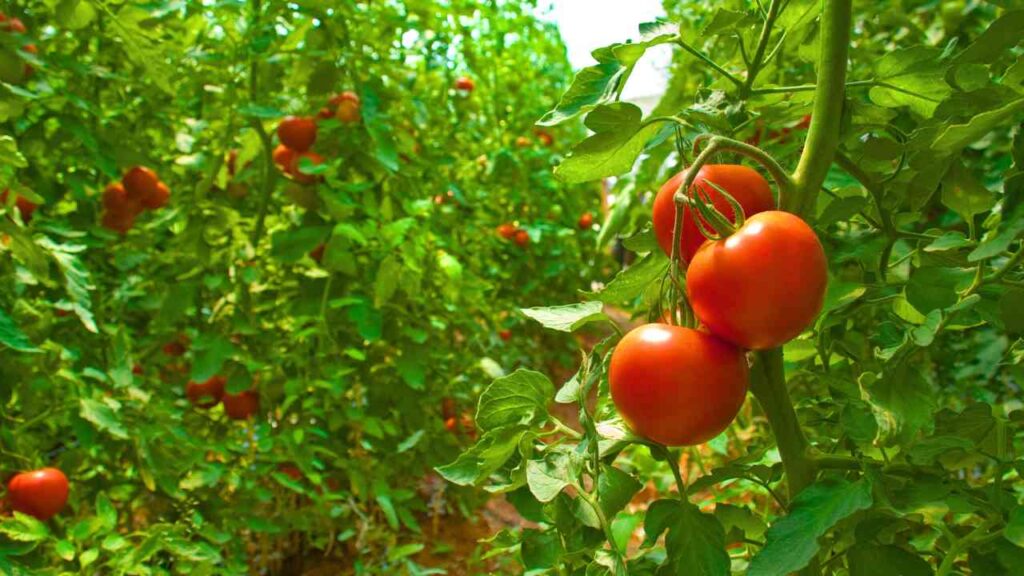
To get the best fruit growth, prune and sucker tomato plants.
Tomato plants will send their energy right where you want it to go: into growing and developing fruits if you prune and sucker them.
When you prune a plant, you get rid of old, useless, or extra leaves. This includes empty stems, yellow or dry leaves at the base of the plant, and leaves from arms that are too long. This makes more room for movement on the top of the soil, lets more air flow, and lowers the chance that diseases will spread from plant to plant.
When you prune a plant, you get rid of the axis, the new growth that grows between the main stem and leaves. This keeps the plant’s energy on the main stem and the food that grows from it instead of making suckers that grow into new plants.
The plant’s job is to make more plants, so it will send out shoots wherever it can. You can pot up a tomato plant and give it to a friend, or you can move it to your yard to get late-season tomatoes. To stay healthy, always use clean, sharp shears.
Tip: Cut off the top of your plants three to four weeks before the first frost date you expect. Instead of making new flowers and fruits that won’t ripen before they die from the frost, this will send energy to the fruits that are already on the plants.
Avoid Getting Sick

If you follow healthy habits, you’ll have lots of tomatoes in your yard.
Healthy plants are plants that can make things. You can make sure your plants are as healthy as possible by doing these tried-and-true things, which will lead to more growth and, eventually, more tomatoes:
- Give plants enough room. See how far apart the seeds should be planted on the box. Tomatoes need one to four feet of space between each plant, depending on its size, type, and trellis system.
- Crop movement is important.
- Disease-resistant types. When you go shopping for seeds, keep in mind that most companies list the diseases that each seed can’t get.
- Keep plant trimmings and other plant debris out of parks.
- Buy seeds, soil, and amendments from sites you can trust.
- Clean your tools after each use.
It is more likely that your tomato plot will not get diseases, so the plants will grow faster and make more tomatoes that will ripen. There’s no reason why indeterminate types can’t produce until the first frost if everything goes as planned.
Stick to a Plan
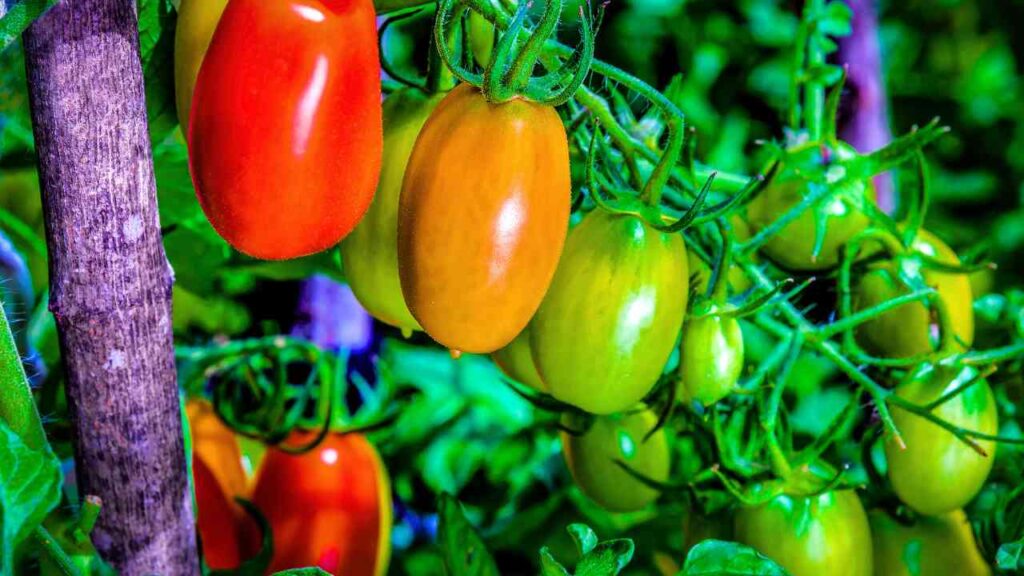
Tomato plants will grow well and produce lots of tomatoes if they are taken care of regularly.
Don’t forget about your tomatoes once they start to grow and make tomatoes. For them to work well in the long run, maintenance and care are important.
Maintenance done once a week should include:
- Getting rid of old, yellow leaves and empty stems
- Pulling weeds
- Taking out suckers
- Using drip irrigation to water deeply
- Adding fertilizer as needed
Last Thoughts
There’s no magic way to make tomato plants grow a foot overnight, but if you give them the right conditions and lots of care, they’ll grow faster and make more tasty fruits. I hope you’ll use some of these garden tips and tricks this year and see how they improve things. Have fun planting!

